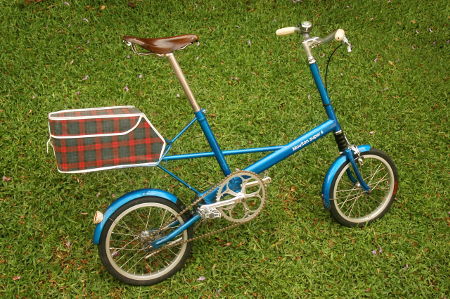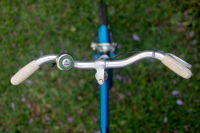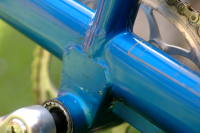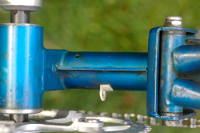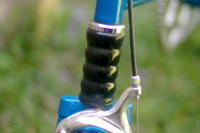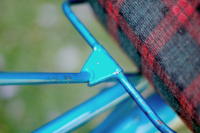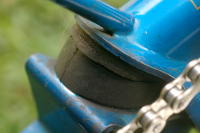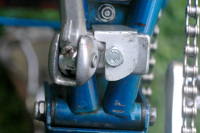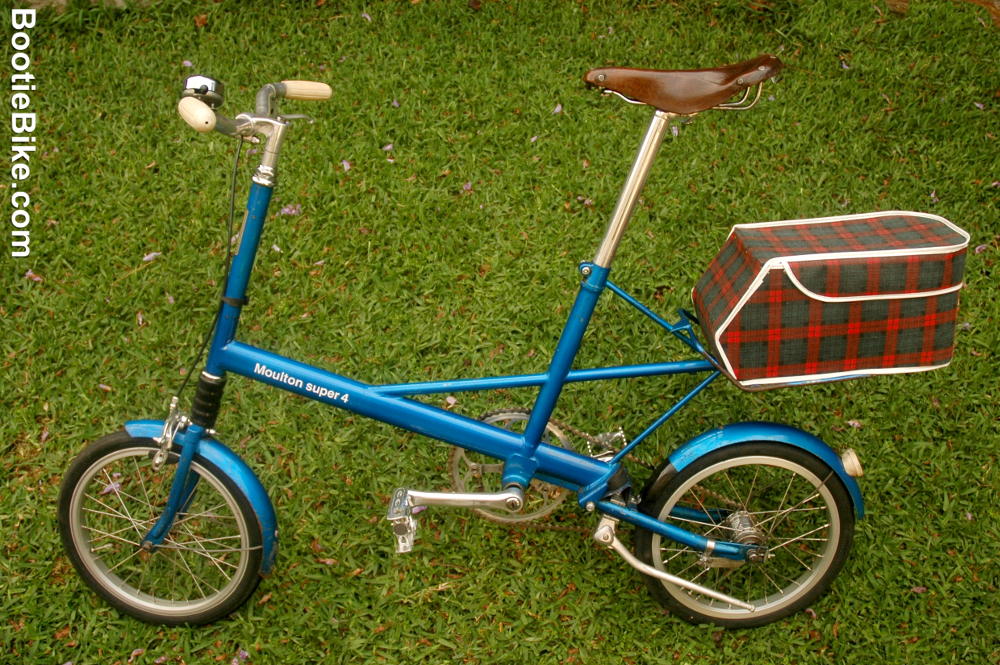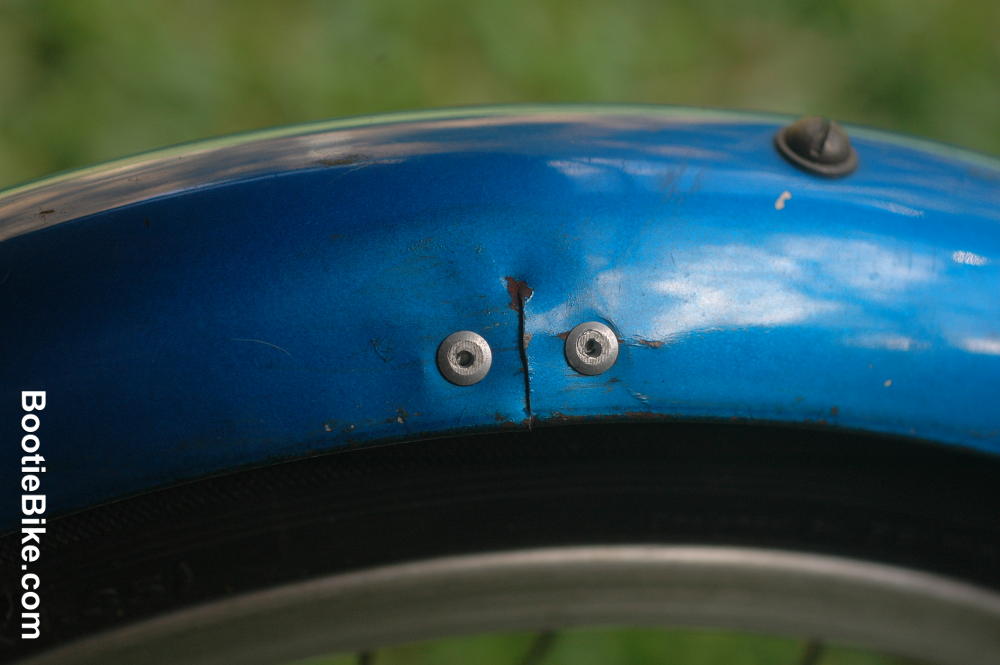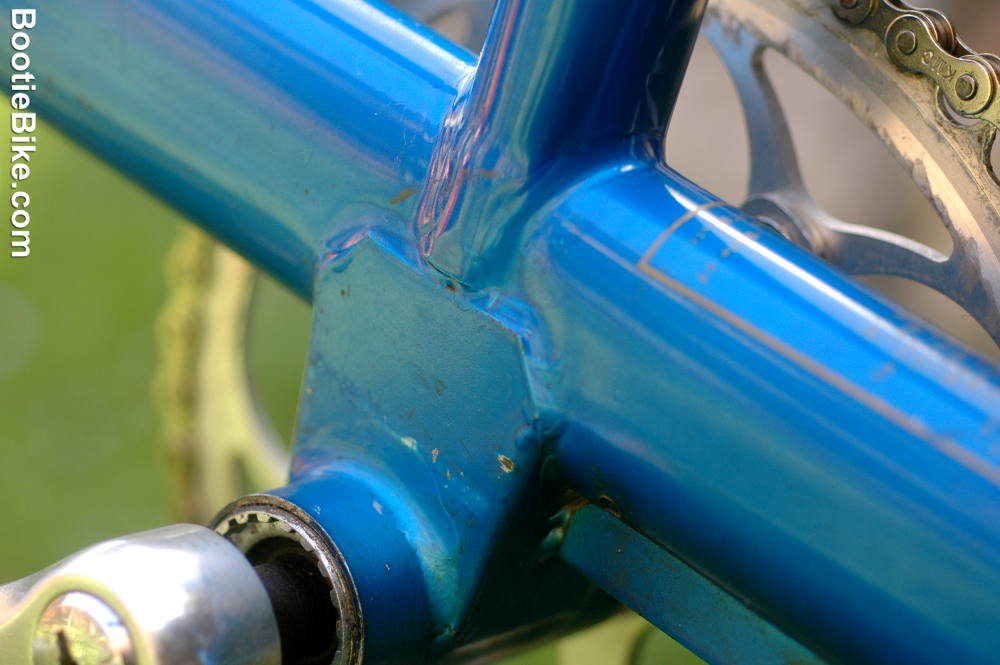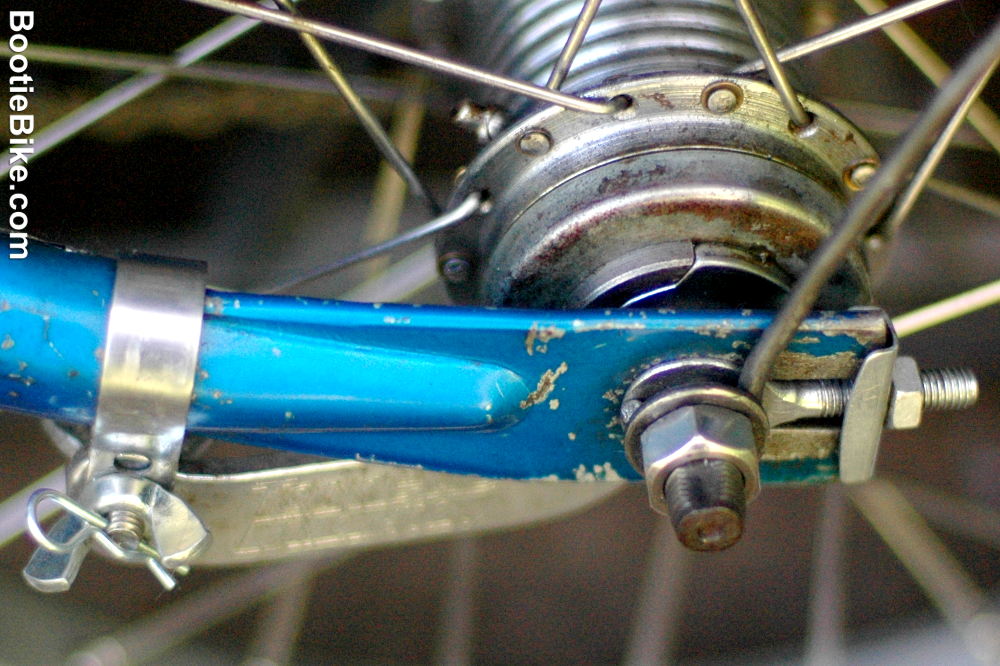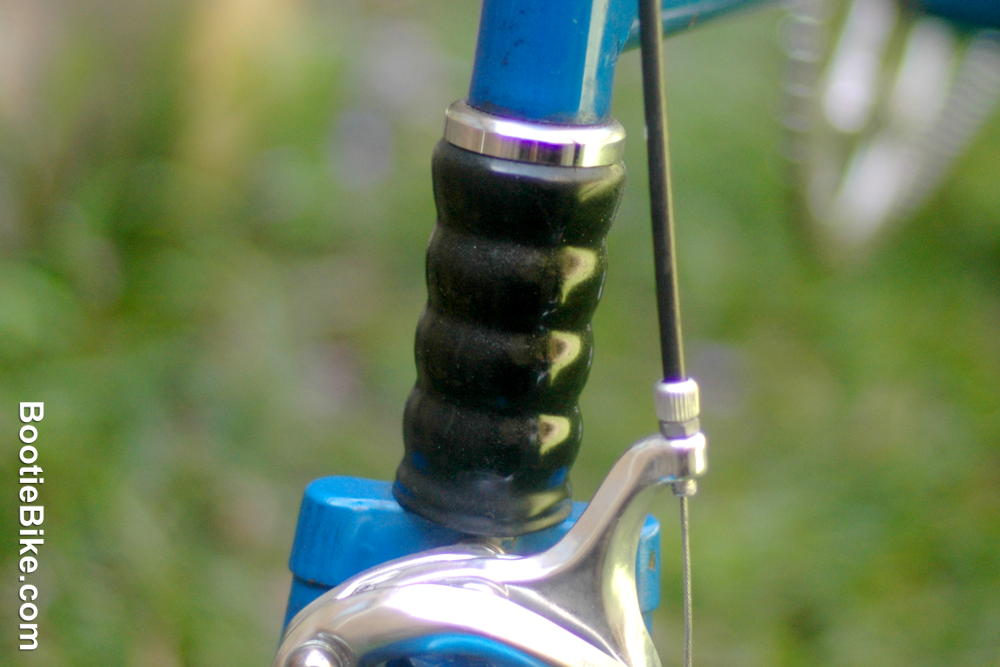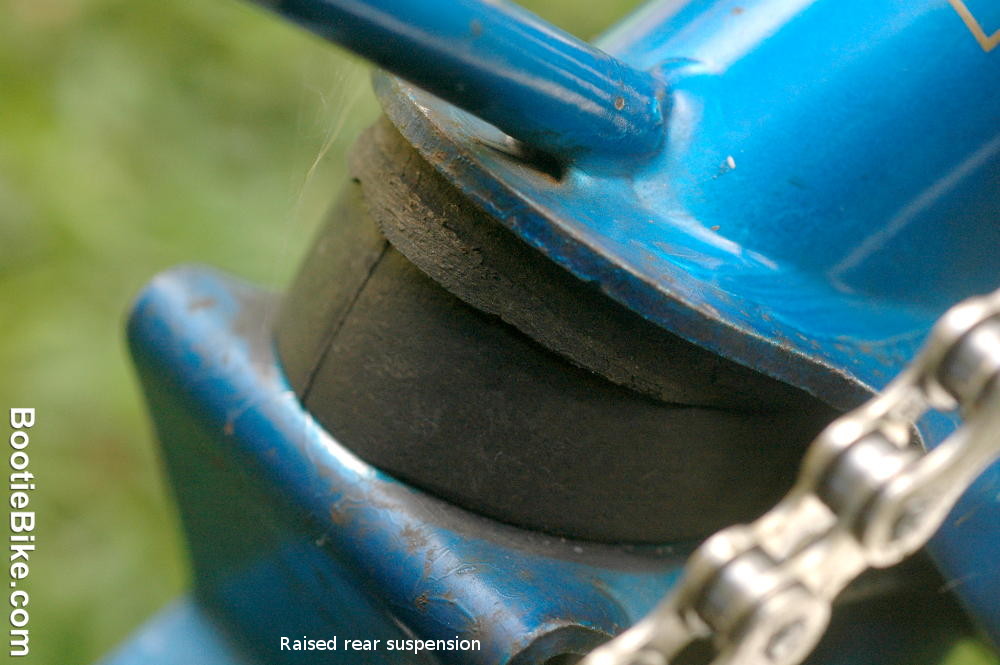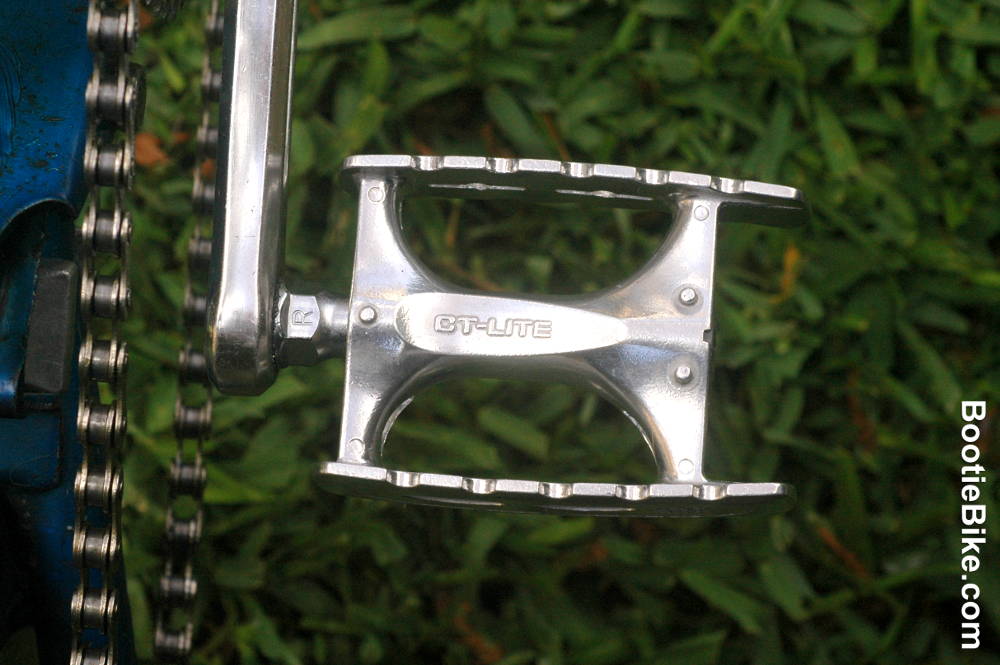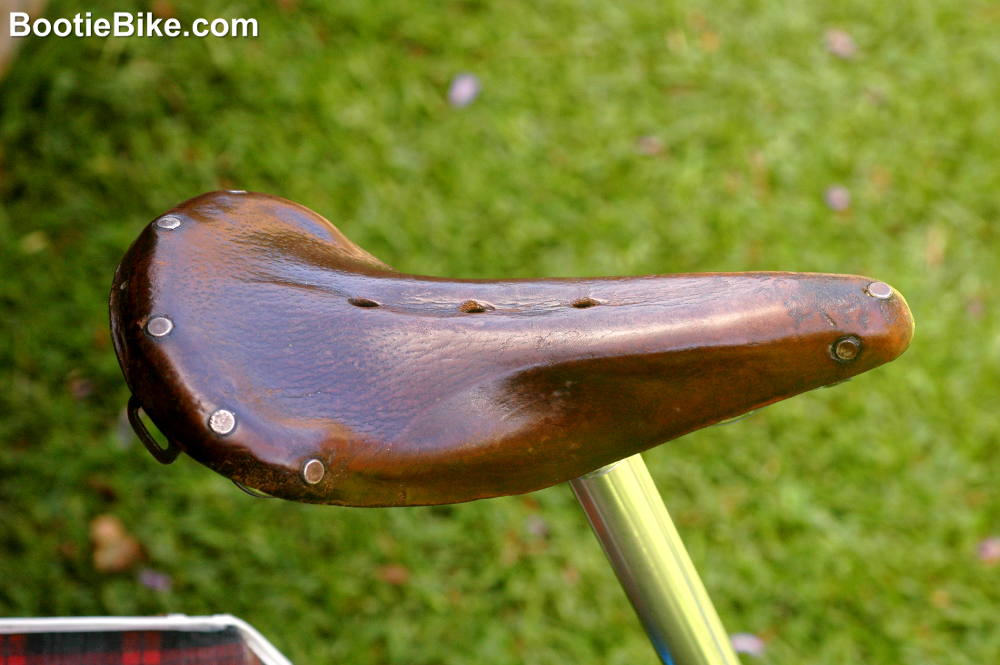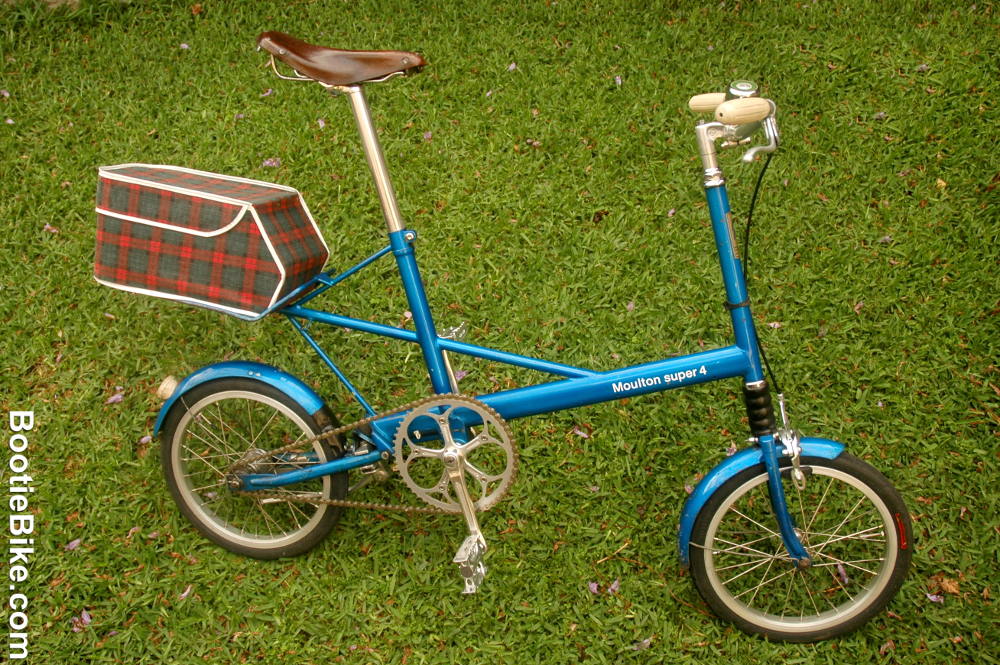1960s Moulton Mini (Super 4)
The toy that became a Moulton
The bicycle you see here is the smaller of the two models made by Moulton in the 1960s. I have called it the 'Mini', but  it came under various other names as well, depending on the specification.
it came under various other names as well, depending on the specification.

The Moulton Mini was based on the design of a children's bike, the Triang 'Junior 1970'. Introduced in 1965, the Junior 1970 was a simplified, scaled-down, licensed version of the original Moulton bicycle. It was produced  until 1971, when the manufacturer went into liquidation in the face of a changing market.
until 1971, when the manufacturer went into liquidation in the face of a changing market.
Alex Moulton must have had his eyes on the Junior 1970 as sales of his bike plummeted after industry giant Raleigh introduced its lookalike model, the RSW, in mid-1965. The new Raleigh was smaller than the Moulton, so why not use a smaller Moulton to hit back? And that's what he did. Moulton modified the Triang – which after all was just an already-modified version of his original bike – and had the Mini in the shops by early 1966.
The most obvious change was to the front suspension, which he made the same as his larger bike. (The Triang front suspension was very different, more 'toy' than business.) He retained the Triang-style rear suspension, which differed from that of his original bike in that upward movement of the rear fork merely compressed the rubber; on the larger bikes the rubber was 'sheared' horizontally as well, producing (I believe) a 'rising rate' effect. (For what it's worth, I haven't noticed any difference in that department.) The rear fork blades appear straighter and stouter than those on the Junior 1970, which I guess has something to do with the fractured swingarm issues affecting the early big Moultons.
At a glance, the frame of the Mini appears much the same as that of the larger bike, but closer examination shows otherwise.  To this writer, the frame of the Mini looks like a 'productionised' version of the original frame, which in comparison looks more like a prototype. Perhaps this is what the larger one would have looked like if someone with as much of an eye for costs as perfection had readied it for production – like the three Lines Brothers, the people behind the Triang(le) company (three lines…triangle…get it?).
To this writer, the frame of the Mini looks like a 'productionised' version of the original frame, which in comparison looks more like a prototype. Perhaps this is what the larger one would have looked like if someone with as much of an eye for costs as perfection had readied it for production – like the three Lines Brothers, the people behind the Triang(le) company (three lines…triangle…get it?).

The new small Moulton covered a wide range of conventional frame sizes. The original Moulton, though very long, had been designed to accommodate most adults of either sex. Those left out, from kids upwards, would now be covered by the new entrant; kids and adult versions were made possible by fitting suitably sized handlebars, stem, seat post and crankset, one of the benefits of the open-style frame. There would be much overlap between the adult versions and the larger Moultons, so many folk would be well served by either (the writer, 170cm, included).
The small Moulton was a success, but it was not enough to save the by-then ailing Moulton company; Raleigh took over and continued production of Moultons, big and small, in 1967. Ever searching for subtle ways to cut costs, Raleigh got carried away and unsubtly omitted the front suspension on some versions of the Mini, with consequences Alex Moulton would likely have predicted (had they been inclined to listen to him). Raleigh-built Moultons lingered until 1974.
This example
This example began life as a 'Super 4', a model primarily intended for adult (up to 178cm/5' 10”) use, though it was advertised as being small enough for six year olds (and small 15 year olds). The bike retains its original finish and still looks half presentable from a distance, despite extensive battle scarring.
The '4' in the model name refers to the four speed Sturmey Archer hub that was originally fitted. That has been replaced by a 1960s Fichtel and Sachs Duomatic hub, a wonderful device 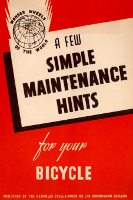 used as original equipment on the Mini Moulton 'automatic'.
used as original equipment on the Mini Moulton 'automatic'.  The change has obviated the need for rear controls and cables, reduced maintenance and improved the appearance, all while transforming the riding experience. Yes, I like the Duomatic.
The change has obviated the need for rear controls and cables, reduced maintenance and improved the appearance, all while transforming the riding experience. Yes, I like the Duomatic.
Generally, Moulton Minis were fitted with chrome plated steel components, and I've replaced most of them with alloy equivalents. This example (original hub 10/65, frame 893522) came with alloy rims, one of which is unusable. Whatever the material, the wheels are an oddball size; '298' ETRTO. New alloy rims are unavailable and in any case the choice of tyres is very limited, so I took a chance and found that the more common 305-size rims shod with Primo Comets fit quite nicely. And they do allow the bike to roll very well. I've also used suspension inserts, front and rear, to raise the ride height slightly for more pedal clearance.
Taking the newly rebuilt small Moulton for a first spin was an uneasy experience. The bike felt twitchy and not terribly stable, and I wondered what I had gotten myself into. That impression faded, the twitchiness morphing into unparalleled manoeuvrability, with stability comparable to that of any other bike (as long as two hands are on the bars). Nevertheless, large pavement irregularities are to be feared; beyond that the light weight, duomatic and manoeuvrability make it a fun ride.
With thanks to
The marvellous Moulton mini, Paul Grogan, 2007
Bicycle Hub
Minutiae
Wheelbase (measured): 98.3cm
Length overall: 139cm (without shopper bag); 144cm (with)
Weight: 12 kg; as modified, including shopper bag
Wheels/tyres: 305 x 37; Primo Comet
Geared hub: 1960s Fichtel and Sachs Duomatic, slightly rust enhanced
Gearing: 53/14 = 51 and 69.4 gear inches
Brakes: Caliper/coaster
Materials: Lugless steel frame; round section tubing, except for main beam. Components all alloy except for original steel front hub, mudguards, headset. Wrights saddle.
Further reading
The original (big) Moulton – The one that started it all
About small wheelers (i.e. why this small wheeler madness?)


